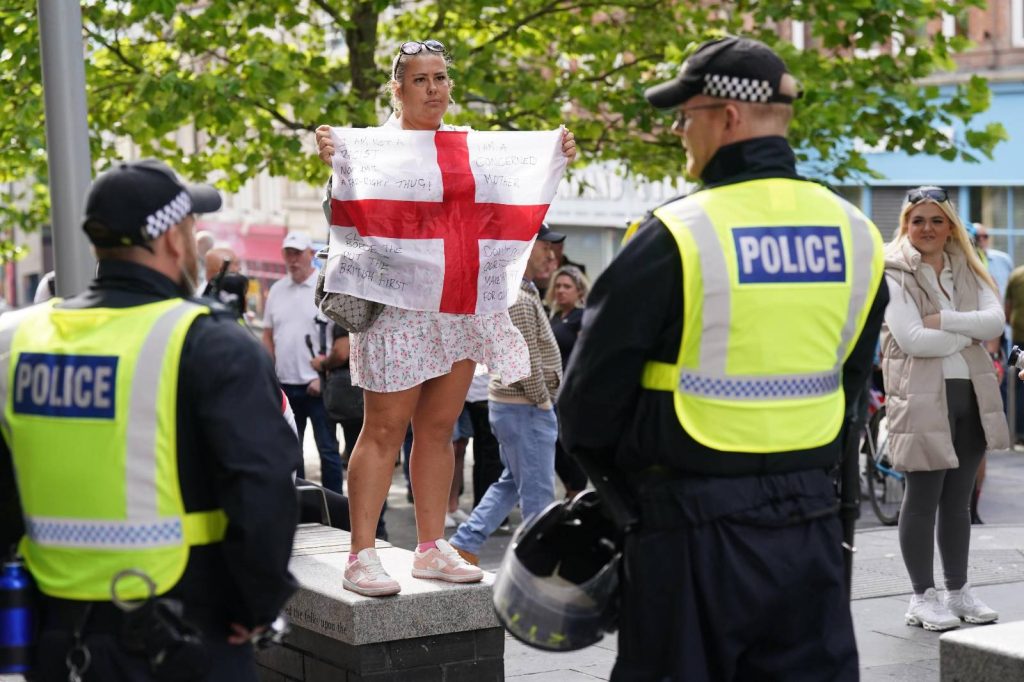On Thursday July 18, a video of West Yorkshire Police removing children from a home in the Harehills area of Leeds while being confronted by a large group of angry onlookers circulated online. Before this, claims of the injuries of an infant in this household were presented to family court, convincing a judge to rule for all the children to be taken into the care of extended family immediately.
Rather than being a simple matter of social services making a decision based on the available evidence of neglect, this action was interpreted instead as a racist attack by the state against the entire ethnic group the family belongs to. Within hours, a full-blown riot erupted across Harehills. Cars and buses were set alight, rioters built fires on the roads out of wheelie bins and pallets and the attending police were attacked.
Whether someone agrees or disagrees with this decision by social services has now been rendered irrelevant. A simple action by the authorities to enact their powers to protect children had been reconfigured by informal community networks into a tragic racial injustice to be opposed. The fact the police were actually taking the children to stay with their relatives has also been made equally irrelevant. This initial characterisation resulted in the hysteria that kick-started the destruction of this area.
Pause for a moment and consider how a social worker, a nurse, a teacher, a doctor, or even a dentist can already feel daunted by the conflict between raising a concern for a child versus the repercussions of making an error. A string of child abuse and neglect deaths have invariably been blamed on some doctor or teacher failing to detect a bruise or a change in behaviour, and raise the alarm.
Harehills adds a terrible modification to this angst, now familiar to modern Britain: any action taken after raising concern through the proper channels can be translated to the language of identity and in turn to a collective identity-based grievance. Decades of building a nurturing, positive environment in order to earn the confidence of vulnerable children, a key strategy to combat neglect, child marriage, or female genital mutilation, has the potential to be set back by the threat of such spectacular, destructive backlash at the mere perception of discrimination.
Still, let us return to how these riots began. Video of the ‘abduction’ of the children in Harehills went viral. A narrative was quickly pasted onto the event. This isn’t new: political parties, grifters, self-appointed ‘community leaders’ have always found great propaganda value in hyperbolising everyday stories as existential threats to entire identity groups. An influential figure’s private comments, a fight in a wig and cosmetics shop, a drawing of a religious figure, can all warrant a histrionic, disproportionate reaction. With any emotive news being spread, before the facts can be ascertained, sections of the public belonging to different identity groups will interpret emerging stories through whichever narrative sounds the most compelling. In the case of Harehills, removing children from a house to send them to their extended family was twisted into an act against all Romani people, because some of them live in that area.
Just over a week after this riot, on July 29, a children’s dance class in Southport, Merseyside, was attacked by a teenager wielding a knife. Three white girls were murdered, and ten more children and adults were injured. As the local community reacted with horror and grief, misinformation spread through informal networks that mirror the ones used in Leeds.
According to the Metro newspaper, false rumours circulated on Telegram that the killer was a Muslim immigrant. Danny Tommo, a nationalist social media personality, posted a video to YouTube, in which he repeated the false rumours and called on his audience to demonstrate in Southport. By the time a judge revealed the suspect’s identity to the public to quash these rumours, several race riots had already started.
As in the Harehills riot, the story was quickly pressed into a narrative before anyone could discover the facts and motives behind this attack. The murders in Southport were promptly interpreted in a similar style to the Harehills child removal: an act of racial injustice to be opposed. Perhaps the most significant difference about this incident, is that the aggrieved identity group this time was not an ethnic or religious minority, but white British people, the majority population of the UK, now acting with the same sense of collective, identity-based grievance as minorities have.
Across England, in districts ranked as some of the most deprived areas of Europe, a violent tempest vented its pent-up frustration. The initial protest in Southport became an attempt to attack a mosque, stopped by riot police who bore the violent anger of the crowd, some already in balaclavas, who pelted them with bricks.
These scenes inspired copycat violence in the following days. Protests were called against immigration in one form or another, and although some passed off peacefully, many became equally violent, with some homes and businesses that were connected to immigrants being vandalised by mobs. In the most serious incidents of this wave, two protests at hotels that had been commandeered to house asylum seekers descended into violence where the crowds attempted to set the hotels alight before being beaten back by police.
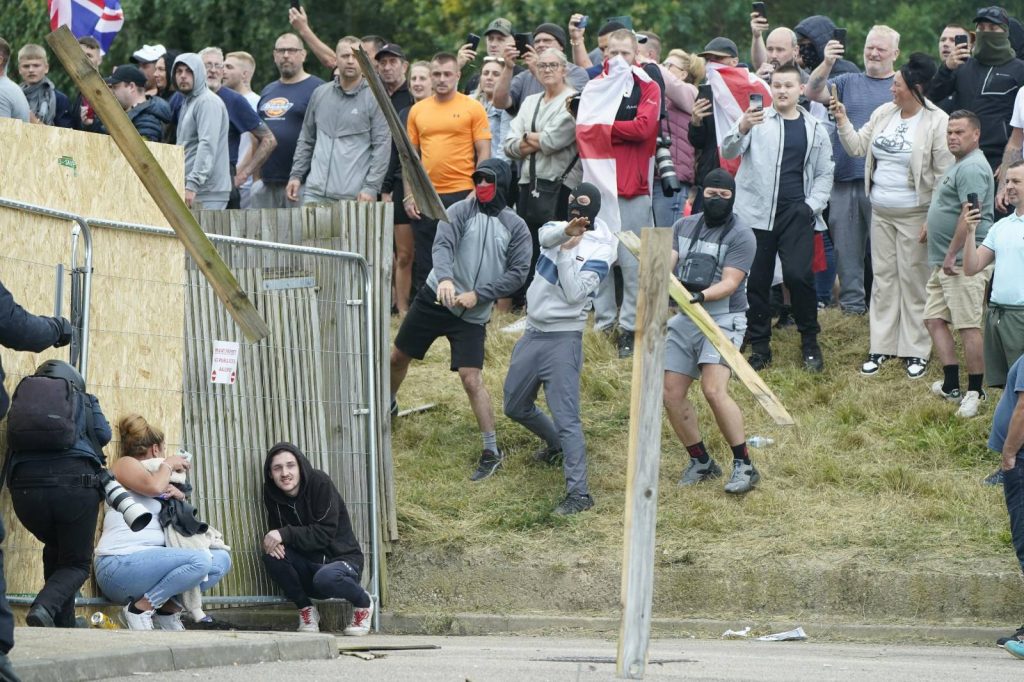
Whether they rioted or simply held signs, the crowds were explicitly blaming mass immigration, and the perceived negative effects of mass immigration, not only for the Southport murders but the rage they had unleashed.
While far-right commentators engaged in stoking up public anger, the official anti-racism lobby began their own efforts of misinformation and deception, further raising tensions. Rather than waiting for the riots to die down, there were those who had to build political capital by further dividing our class. Nick Lowles, the CEO of Hope Not Hate, tweeted about acid attacks targeting Muslim women in Middlesbrough. These were later found to be just as baseless as the rumours of the Southport killer being a “Muslim terrorist” who’d arrived illegally by a small boat crossing.
As the anti-migrant riots raged on into August 4, the Prime Minister decided to take decisive action. Keir Starmer, formerly the head of the Crown Prosecution Service during the August 2011 riots centred in London, has previous for increasing the severity of criminal charges to ensure tougher sentencing, as a form of collective punishment. Unlike with the earlier Leeds riot, the response from Starmer for the string of race riots across England was decidedly blunt: facial recognition, threats of social media censorship, remand for suspects and harsh sentencing. He declared courts across the country would be operating 24 hours every day to process rioters.
It certainly acted as a deterrent. If a far-right hit list for August 7, widely circulated by the likes of Searchlight and Hope Not Hate, was anything to go by, the planned confrontations threatening refugee centres and immigration lawyers, attracted only a handful of protesters— and thousands of counter-protesters.
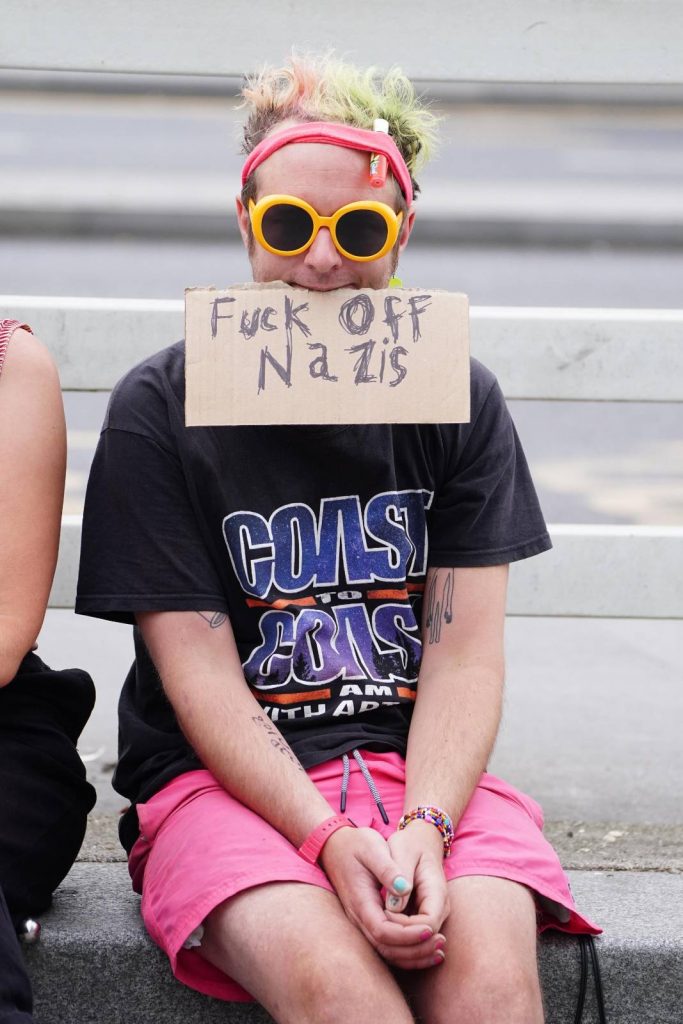
Even the perennially right-wing and anti-immigrant newspapers the Daily Mail and Daily Express, likely aware of their own responsibility for manufacturing consent for these shambles, made a jarring pivot in support of the Stand Up to Racism counter-protests and the return to business as usual. Many liberal far-left commentators, explicitly refused to offer any explanation for the riots beyond condemning it as the work of far-right agitators spreading “misinformation” that had sent “far-right thugs” into a violent frenzy. According to them any attempt to explain this wave of rioting would be an attempt to justify it. However, the British public themselves were happy to do exactly this.
According to YouGov, whilst rejecting the rioters themselves, 67% of Britons identified immigration policy as the contributing factor to the disorder. Significantly, 55% said “previous Conservative governments from 2010-24” bore responsibility for the disorder. Perhaps some of them would be old enough, if asked, to declare responsibility is shared by every British government since 1979.
Because these anti-migrant riots can be understood, yes, even explained, as not simply an outbreak of idiocy by wrongthinking morons too stupid to parse the provocations of social media demagogues— but the ugly spasms of a country mothballed over generations. Entire regions disowned and devastated since Britain’s heavy industries were killed off in the 1980s. A pernicious programme of managed decline was enforced piecemeal: depriving the working class of the prosperity they had enjoyed in decades past, whilst publicly yawping of national resilience, importance, efficiency and potential growth. Nowhere can this contradiction between rhetorical aspirations and policy results be seen more clearly than on the issue of mass immigration.
Successive administrations, whether Labour or Conservative, have openly bewailed mass immigration, but privately acknowledged it as the crutch for an economy rigged towards speculation— stocks and shares in the City of London. A country led by ‘the finance industry’— a peculiar industry that produces nothing.
Despite the endless debate in Parliament, and the constant cycle of outrage from the mainstream media against migrants (“Migrant Invasion out of control,” Daily Express, 2015) and in reaction against those who were seen to be against migrants (“Boris Johnson urged to apologise for ‘derogatory and racist’ letterboxes article,” Guardian, 2019) the actual trend of migration itself has only increased exponentially. Over 1995, net immigration to Britain was approximately 75,000; in 2000 it rose to around 163,000; in 2005, approximately 267,000; in 2015, 332,000.
In 2016, the British public was given a referendum on continued membership of the European Union. After Westminster politicians spent years telling the public that the yoke of Brussels prevented them from curbing immigration, the public voted to leave the EU. Support for leaving the EU was strongest in the North of England, where the August 2024 rioting was concentrated. Referred to as the ‘red wall’, due to its long history of support for the Labour Party, these areas famously switched allegiance to the Conservatives in the 2019 election, because Labour had disowned its pro-Brexit supporters and threatened to reverse Brexit with a second referendum.
In the 2016 Brexit poll and the 2019 general election, the message sent by these regions was loud and clear: bring down immigration. You can imagine the disenchantment felt when, after years of democratically signalling their rejection of mass immigration, the ruling class continued to ignore these people anyway. Indeed, spectacularly so: 2022 saw a record-breaking net immigration figure of 504,000 people.
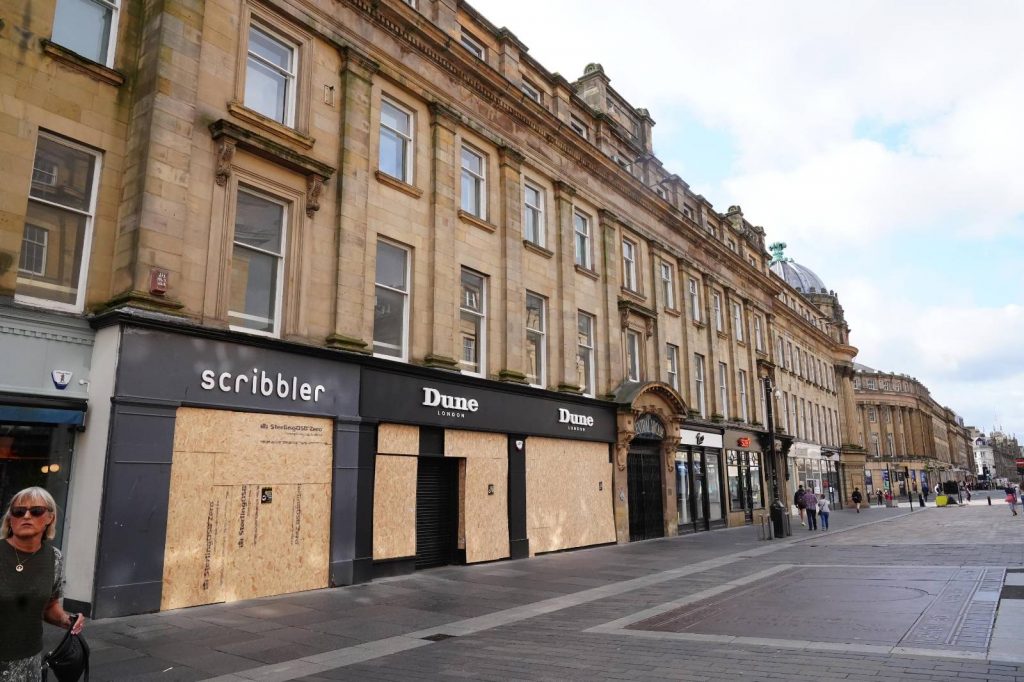
These extraordinary rates of immigration might be sustainable if accompanied by a well-funded assimilation strategy and thoughtful planning of job opportunities and living spaces, ensuring the existing populace feels equitably treated. Yet, this is not the case in our current scenario.
A free market ultimately eliminates restrictions and duties not just on commodities, finances, and services, but on human movement as well. The neoliberal government continually relinquishes authority: it’s simpler to endorse the coexistence of isolated, diverse identities, exploiting established networks of faith, tongue, and community leaders within immigrant groups, rather than undertake the more challenging and costly endeavour of constructing a unified national vision.
Large arrest stats, a show of force, and platitudes about law and order may impress the pundits and frighten some of the demagogues, but this is a short-term bodge so long as immigration remains the way it is; the issue will return, as Brexit and the 2019 election show, and of course the 4,117,610 votes for Reform UK in 2024.
The riots that have done so much to divide our class along racial and cultural lines, must be condemned – but not swept under the rug. We cannot let the violence silence us and force us back into the trenches set by the Establishment: urban enlightened liberals and a backwards-looking right-wing in the disenfranchised North.
Instead, it is obvious that right now we must reject the present levels of immigration and the lazy repetition of the idea that immigration is automatically “good for us,” when “us” doesn’t refer to we, the wage-reliant working class, but the business class speaking on our behalf, in the interests of “Britain Plc.”
The mantras of the liberal left are often half right, but come to conclusions that only excuse and protect the ruling class. We can agree on the clear truth that, for the vast majority of people, the decision to move from the only home you have known to halfway across the globe, is a decision made under immense duress. But rather than celebrate this calamity, we should ask: why should workers from outside of Britain be forced to come here? This is not ‘progressive’, this is not ‘free movement’, this is upheaval, at the very least.
Again, we can agree that immigration is often caused by conflicts that benefit no member of our class, yet the British state shares responsibility for them. Whilst we should of course offer sanctuary to those fleeing persecution in lands our government helped to destabilise, the priority should be ending Britain’s direct or indirect military involvement overseas altogether.
To say that “we” (Britain) were involved in a conflict means that “we” (the British working class) must deal with its outcomes, again, puzzlingly, takes a cross-class view of the nation, where teachers, taxi drivers, and tech support workers should be personally responsible for the 2011 decision to bomb Libya by the Cameron government.
However, war is something of an irrational left-liberal obsession in the first place; the vast majority of migrants are not Palestinian, Ukrainian or Iraqi refugees— they are economic migrants. Even those willing to do life-threateningly dangerous things inside dinghies or under lorries to get to Britain are overwhelmingly coming for work in a stable, prosperous country, not fleeing war. But rather than hiding or obscuring this fact, it is the task of the left to explain that worldwide economic inequality is a system as deliberate and as evil as war itself. The “developing world” is kept “developing” through imperialism— the economic exploitation of resource-rich countries but those that are capital-rich, an unequal relationship enforced by currency value disparities, brutal free-trade deals, and outright economic terrorism in the form of sanctions. To ignore this and just accept that “some countries are poor” and their citizens need to leave them and accept the charity of the civilised West, is a liberal stance, that is, ironically, quite racist.
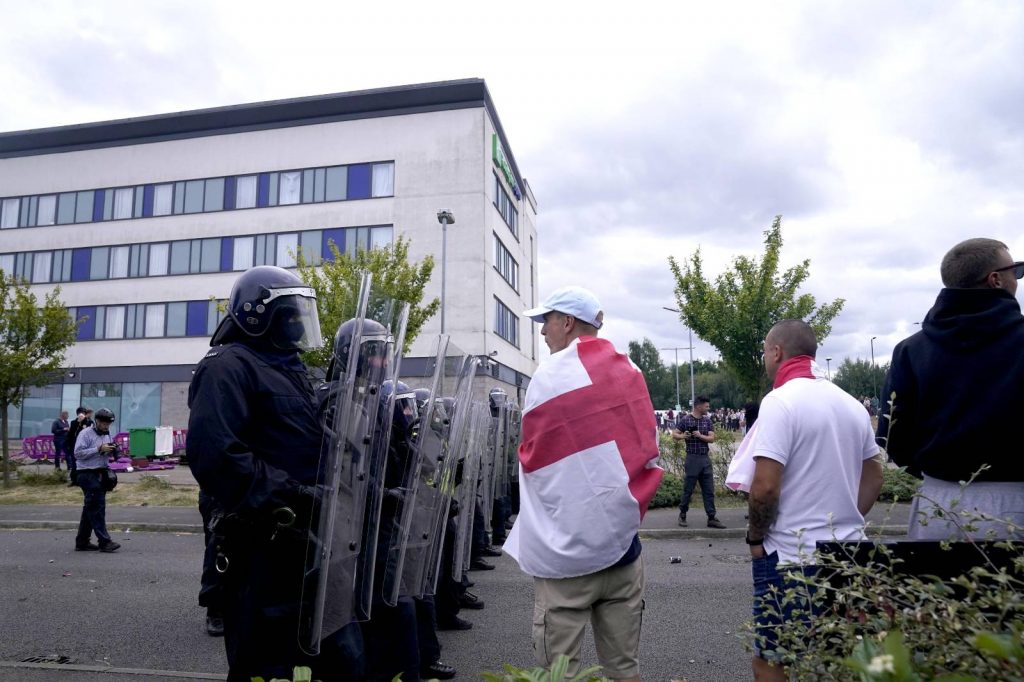
We must also reject the genuinely racist myth (held by left and right-wingers) that integration cannot be achieved. Many countries already require migrants to meet baseline assessments, to be on a par with their prospective compatriots. In a more functional version of Britain, instead of the easy legal migration combined with dangerous and precarious illegal immigration, we could have government training programmes, ensuring everybody securing indefinite leave to stay in the country has English proficiency, training to find work, and a functioning knowledge of local social mores. By insisting on a set standard of abilities, and assisting people to reach them, we can remove the barriers that divide members of our class from each other.
Above all else, it is high time for our movement to reject the politics of identity. We have seen how years of blaming grievances as attacks on every member of a particular group has not been conducive to working-class unity. Worse, it has led to a political landscape adroitly navigated by our enemies, applying a logic of racial injustice, not class struggle. Riots resulting from this, like we have seen in Southport and Harehills, have achieved nothing beyond some property damage and prison time for those involved.
The left made a foolish investment in trying to become the illustrious champions of the oppressed rather than the vanguard of the working class. There is still time for British communists to make a clear break from the former and firmly establish ourselves as the latter. Telling the truth will lose the uneasy tolerance we received from the left-liberals today, but done right, it will earn us the trust of our fellow workers tomorrow.
Challenge Editorial Board

